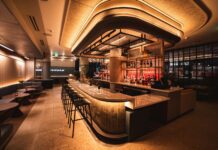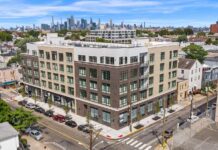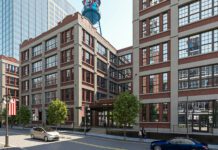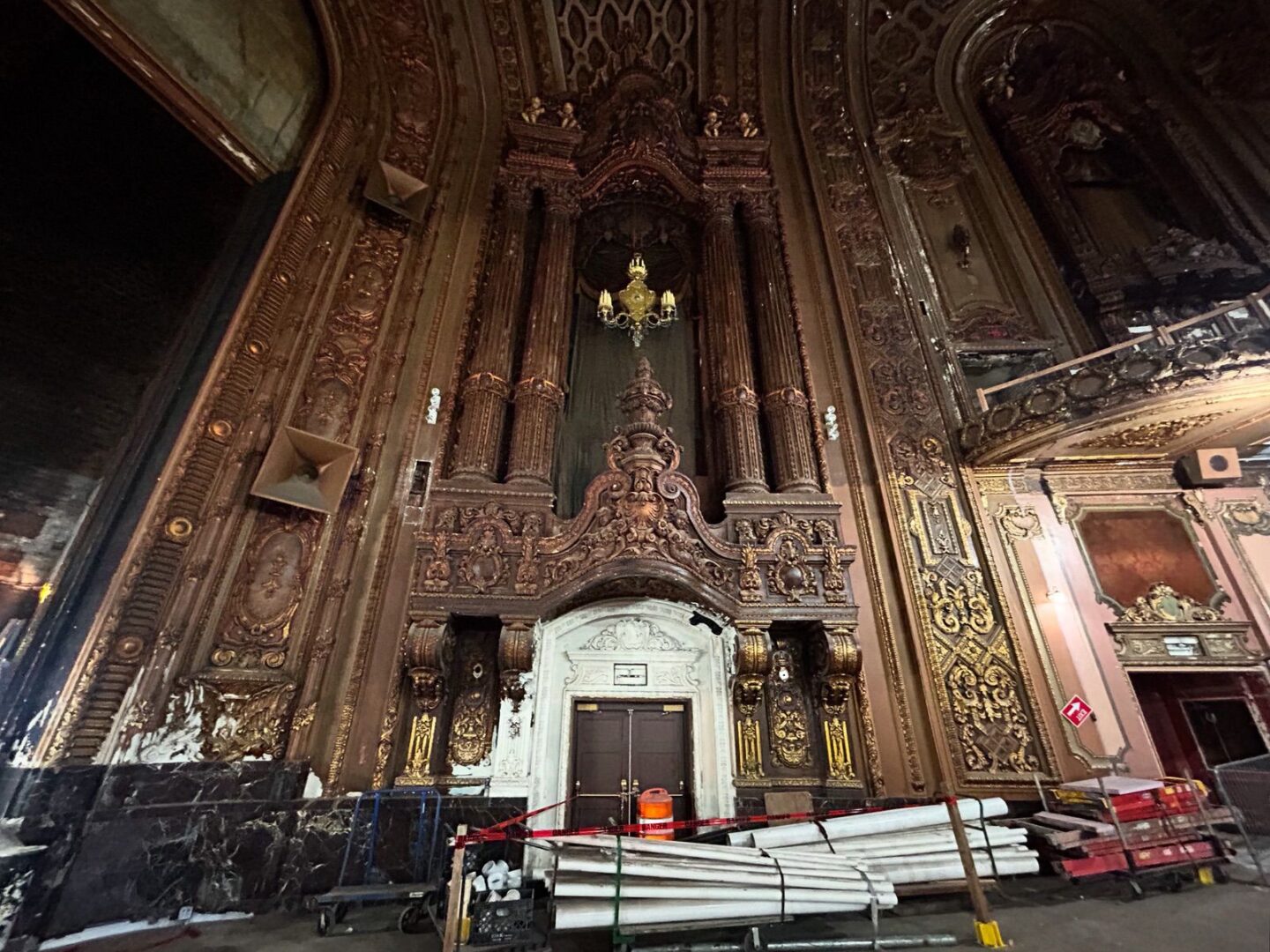
The Loew’s Theater remains an active construction site. The auditorium is stripped of seats, and the smell of fresh sawdust fills the air. Yet, those who were invited on a tour of the historic performance hall last month caught a glimpse of what is to come, and there was much to be impressed with.
Opening just before the Great Depression in 1927, the Loew’s Theater, tricked out in decadent Baroque Revival style with marble and gilded trappings galore, doesn’t have a bad angle.
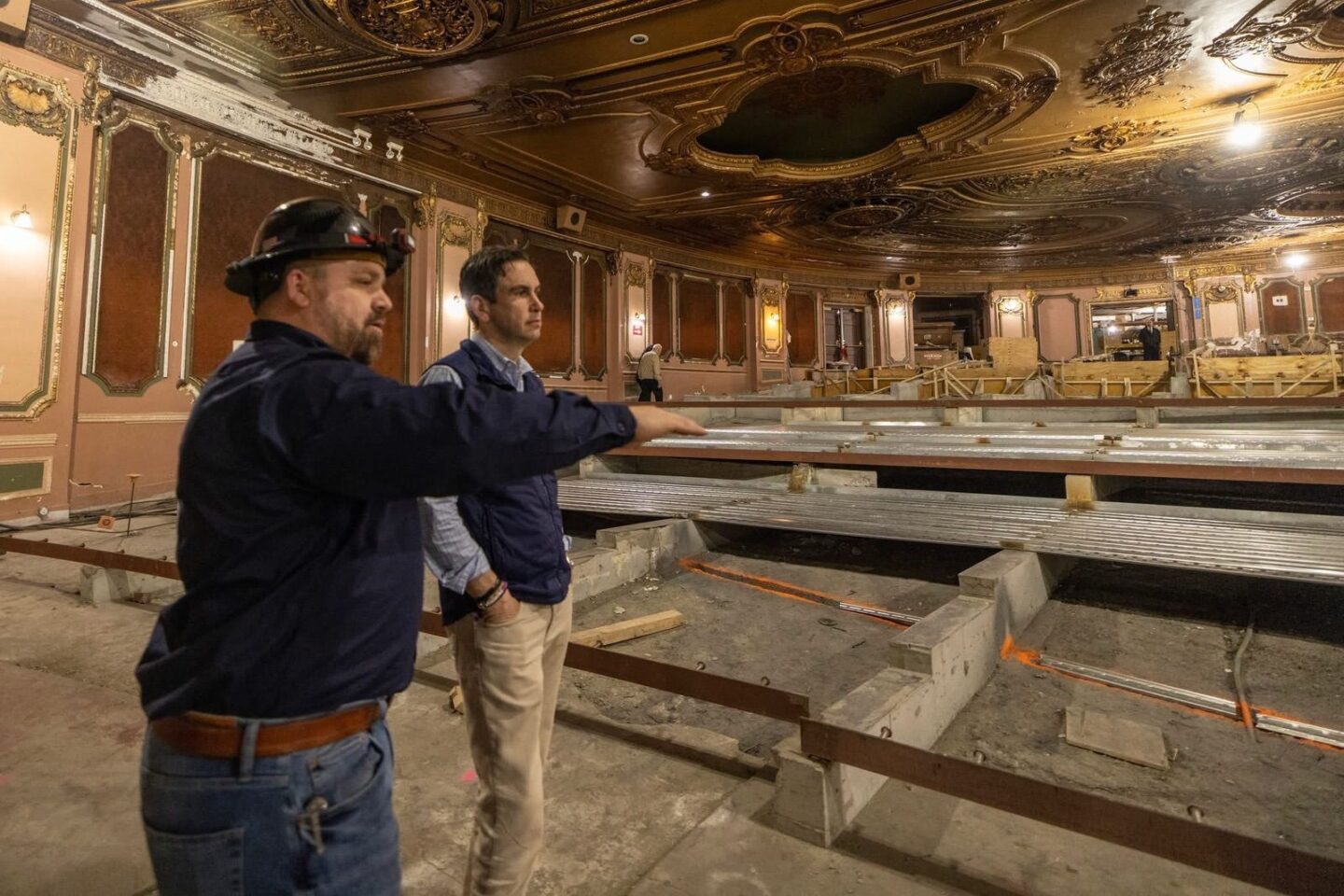
“They put a lot of money and glitter into it before the crash at the end of the 1920s,” said Mayor Fulop, who took a break from a busy governor’s campaign to check on the status of the restoration.
The work underway at Loew’s Theater since 2021, he said, is more than the restoration of just one theater. It is a resurgence of an entire neighborhood that, before World War II, boasted three performance halls where cigar-smoking celebrities, such as Frank Sinatra, used to hobnob in the lobby.
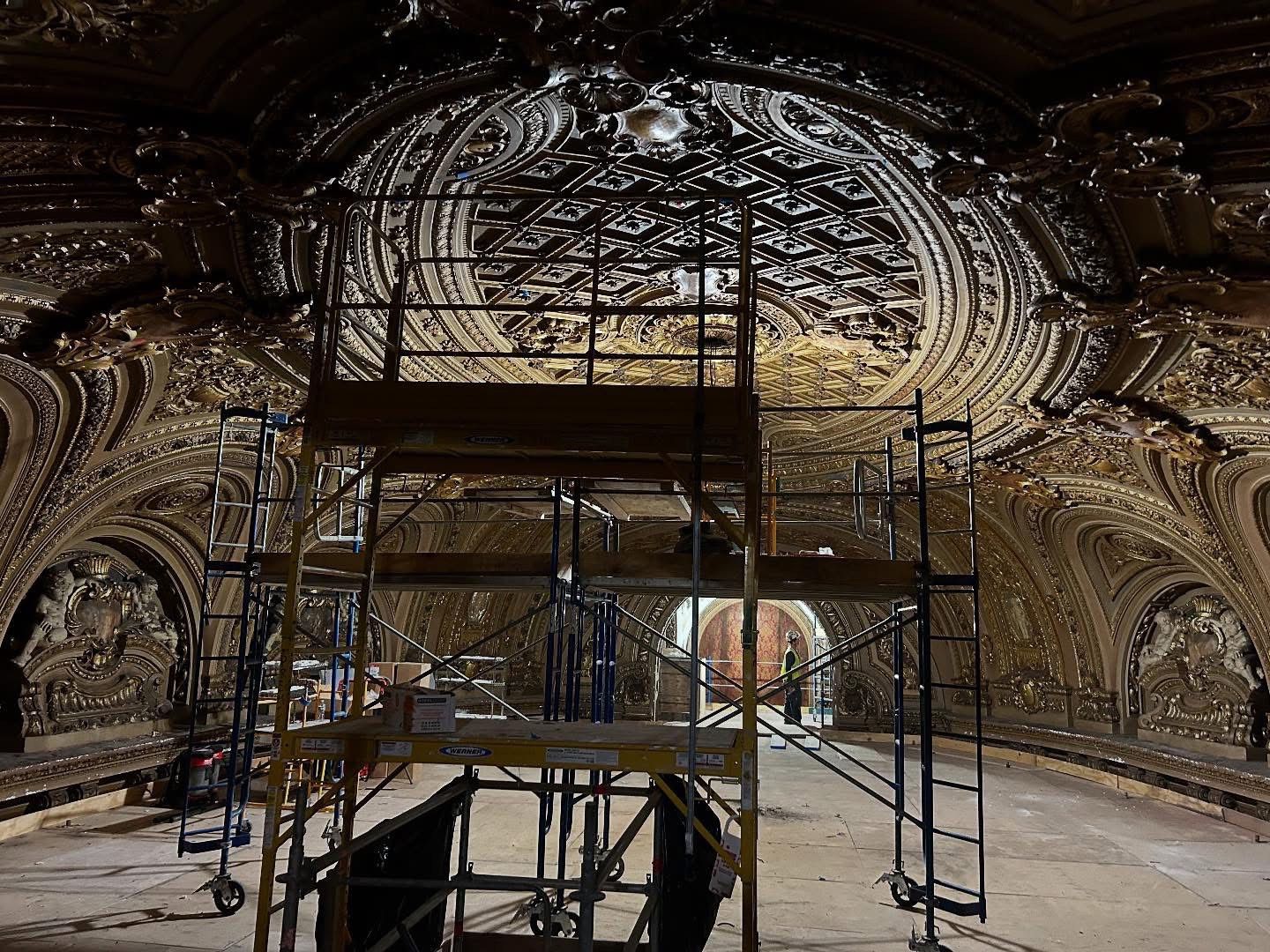
Fulop said his goal is to put Jersey City on a trajectory to become the arts and entertainment center for the state, with Journal Square at the forefront. That’s a title that many believe has been held by Newark with storied venues like Symphony Hall, also undergoing a restoration, and NJPAC, and arguably the state’s most prestigious art institution in the Newark Museum of Art, though the curators at Princeton Art Museum may have something to say on that topic.
But the tide could be turning. Not only will Loew’s be reopening next year, but another performance hall, called the Symphony Center, could also be coming to the Powerhouse Arts District, which will house the New Jersey Symphony. The Jersey City Theater Center announced it could be moving to a new home at 575 Summit Avenue. Fulop is also determined to bring the Centre Pompidou to 808 Pavonia Avenue, the first world-class museum in a city with an impressive array of smaller, private galleries, such as Deep Space, Mana Contemporary, Novado, and Barsky.
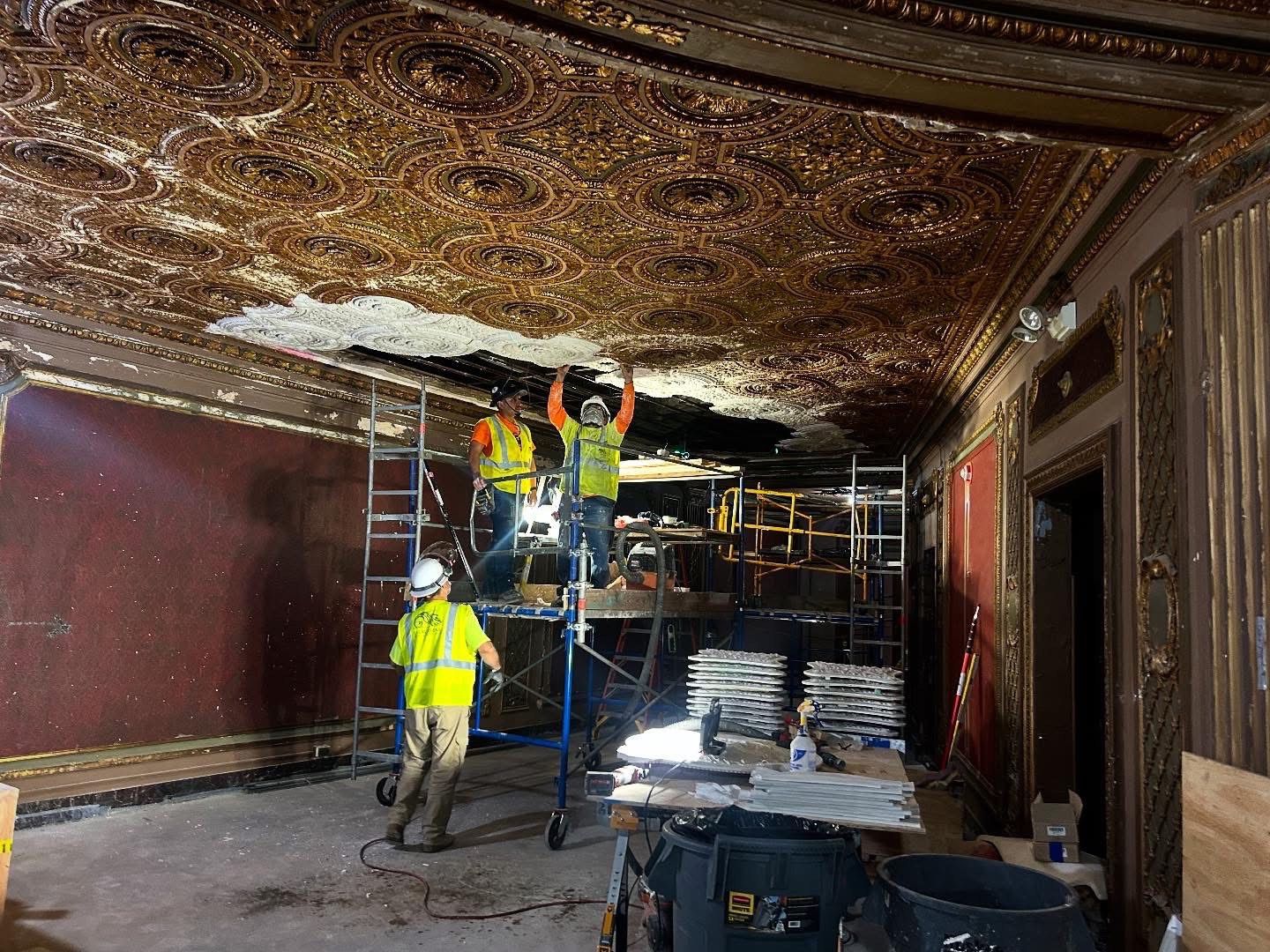
“It’s coming,” said Fulop about the Centre Pompidou, as if to knock down any thought that the plan could fail.
Last year, New Jersey Symphony’s announcement that it would be moving its administrative offices from Newark, where it has been located since 1965, to a new flagship concert hall in Jersey City shook the arts world. The decision, which was three years in the making, was a strategic chess move as the symphony’s top brass predicts Jersey City will eventually become the state’s most populous city, according to Geoff Anderson, NJS’s vice president.
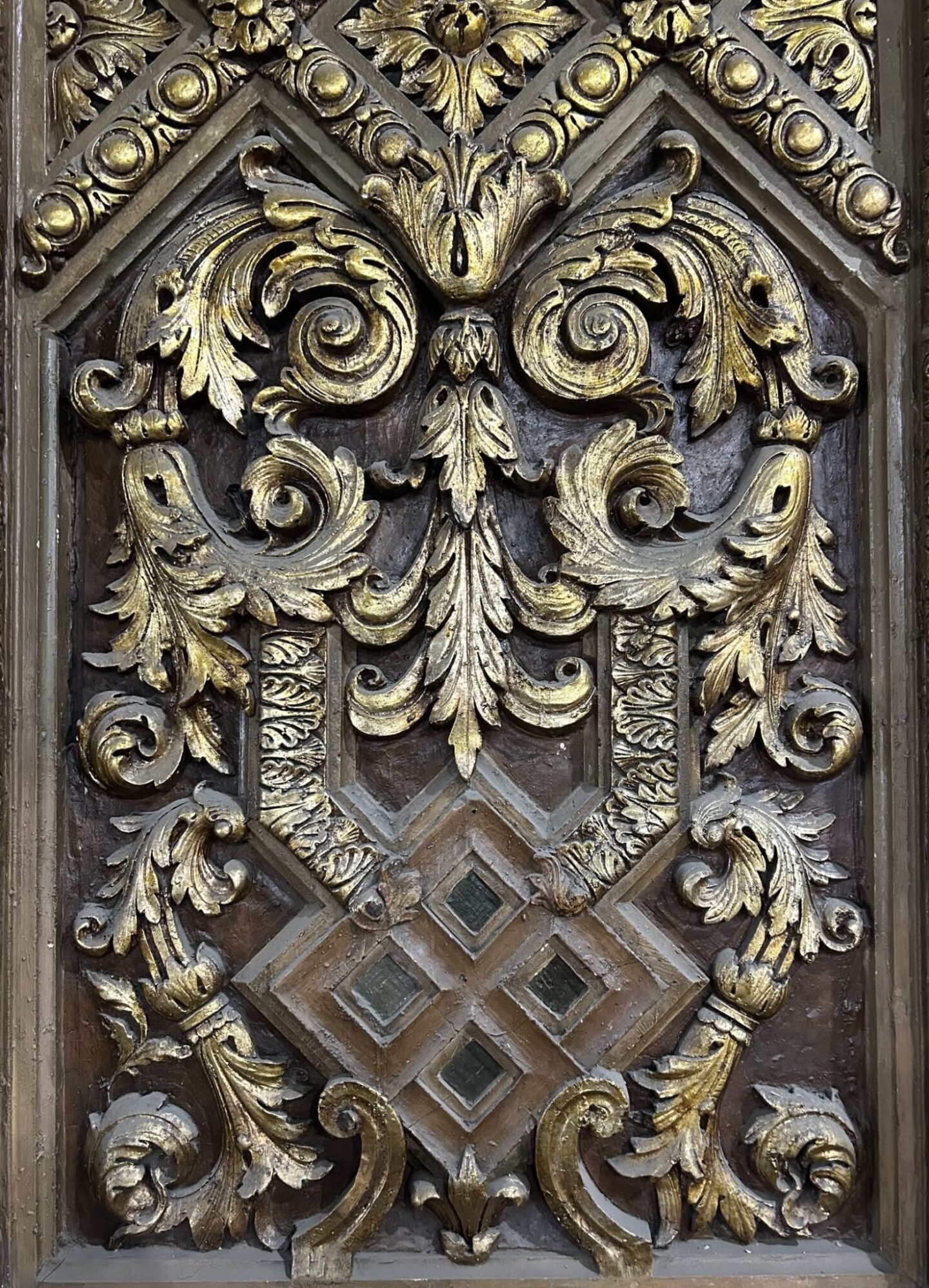
Anderson believes that the region is one of the most “competitive arts markets” in the nation, and the New Jersey Symphony is banking on filling the seats of their new concert hall with music lovers from both sides of the Hudson River.
One of the criticisms that came up surrounding the Centre Pompidou was whether an arts organization in Jersey City could attract New Yorkers across the Hudson. Anderson said his organization already is.
“We’re already seeing significant patronage from New York residents,” Anderson said. “The new Symphony Center location, with direct PATH train and ferry access to New York City, will attract even more.”
The one thing Newark has that Jersey City doesn’t is a massive sports arena. The 16,000-seat Prudential Center, in addition to hosting the New Jersey Devils, hosted the MTV Video Music Award two years in a row along with some of the biggest names in music and comedy. Interestingly, Prudential and Loew’s now share the same operator in HBSE. Despite being four times smaller, Loew’s could see similar programming, according to Bill Hanousek, corporate communications manager.
“If you look at the calendar of events at Prudential, you see K-pop, hip hop, legacy acts, top-40 artists – expect to see the same thing here,” Hanousek said. “Netflix specials, comedy specials – think along those lines.”
One thing that Loew’s has that other arts venues in the region don’t is sheer opulence – it truly feels like stepping into an 18th-century French palace. It’s an experience on its own. Architects C.W. and George Rapp, the same architects behind the Kings Theatre in Brooklyn, wanted to design performance halls that made even working-class people feel like royalty while in the audience, according to Colin Egan, founder of Friends of Loew’s.
“Someone in the audience might have only enough money for the trolley car home, but the time they were at the theater, they felt equal to the banker,” Egan said. “That has always made Loew’s special.”
